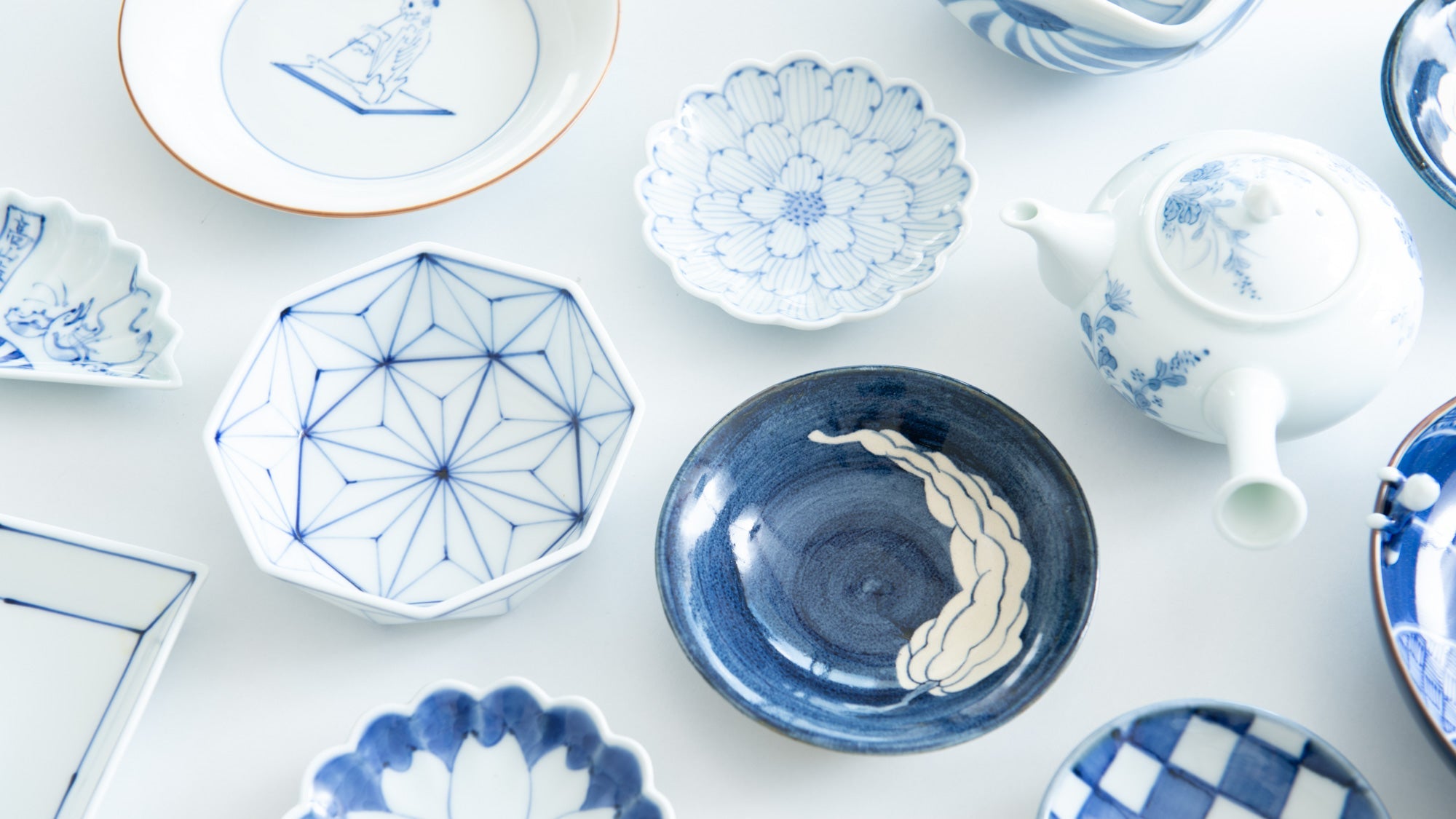
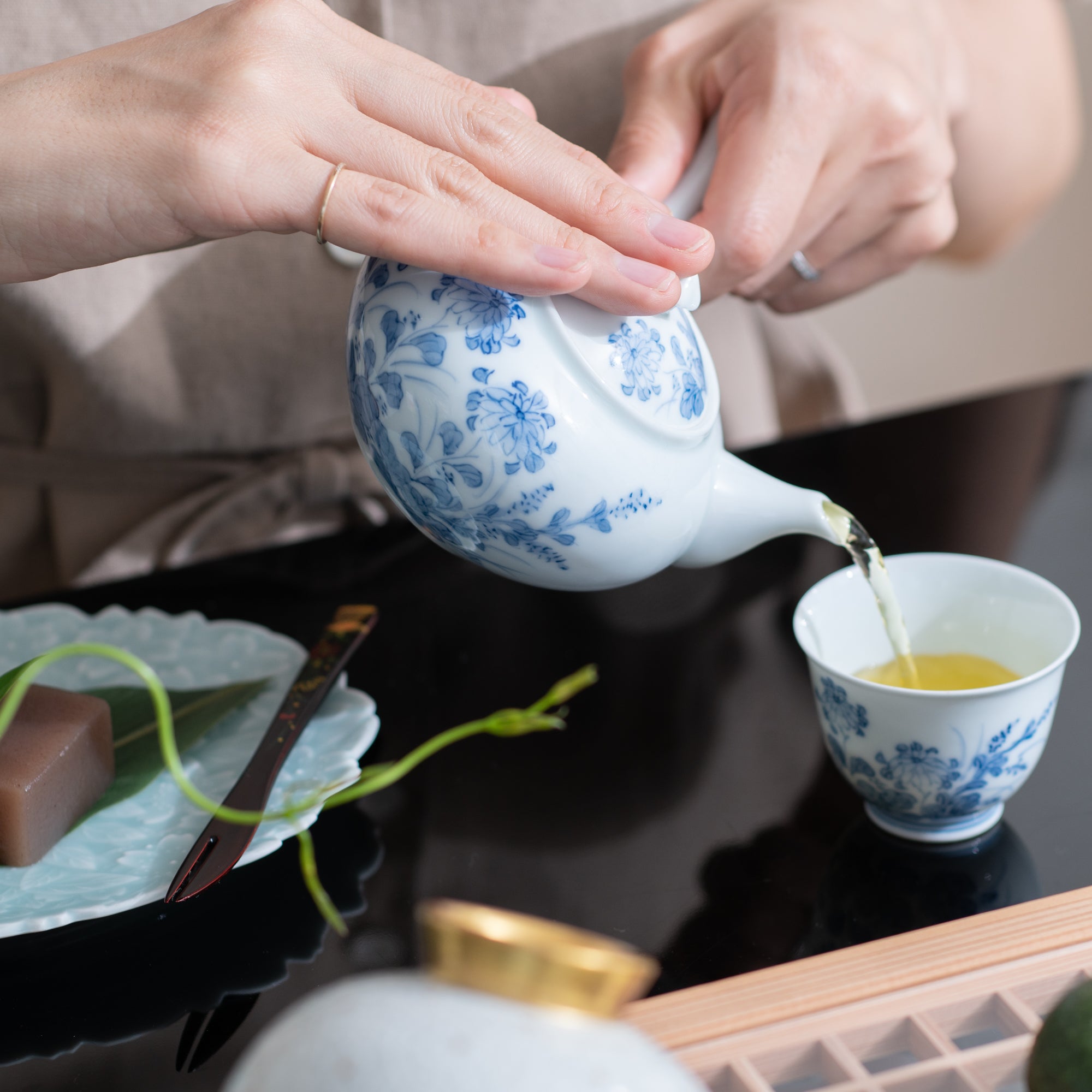
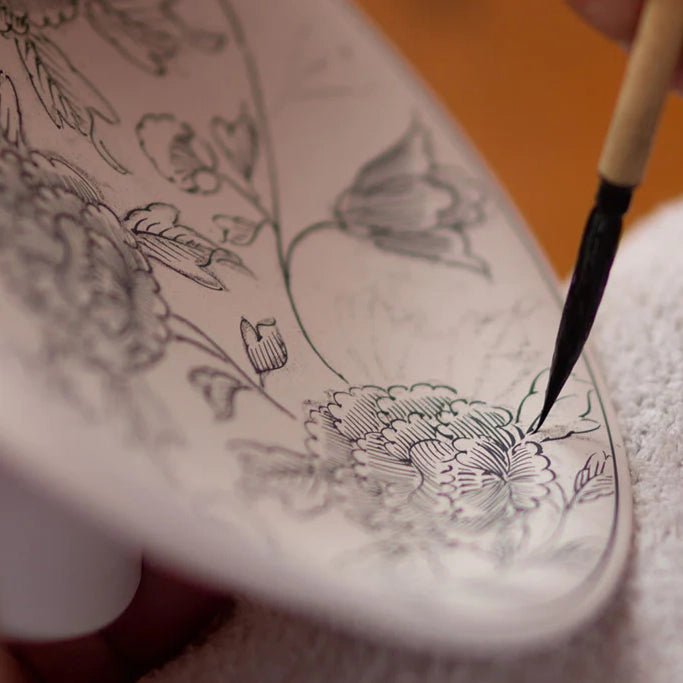
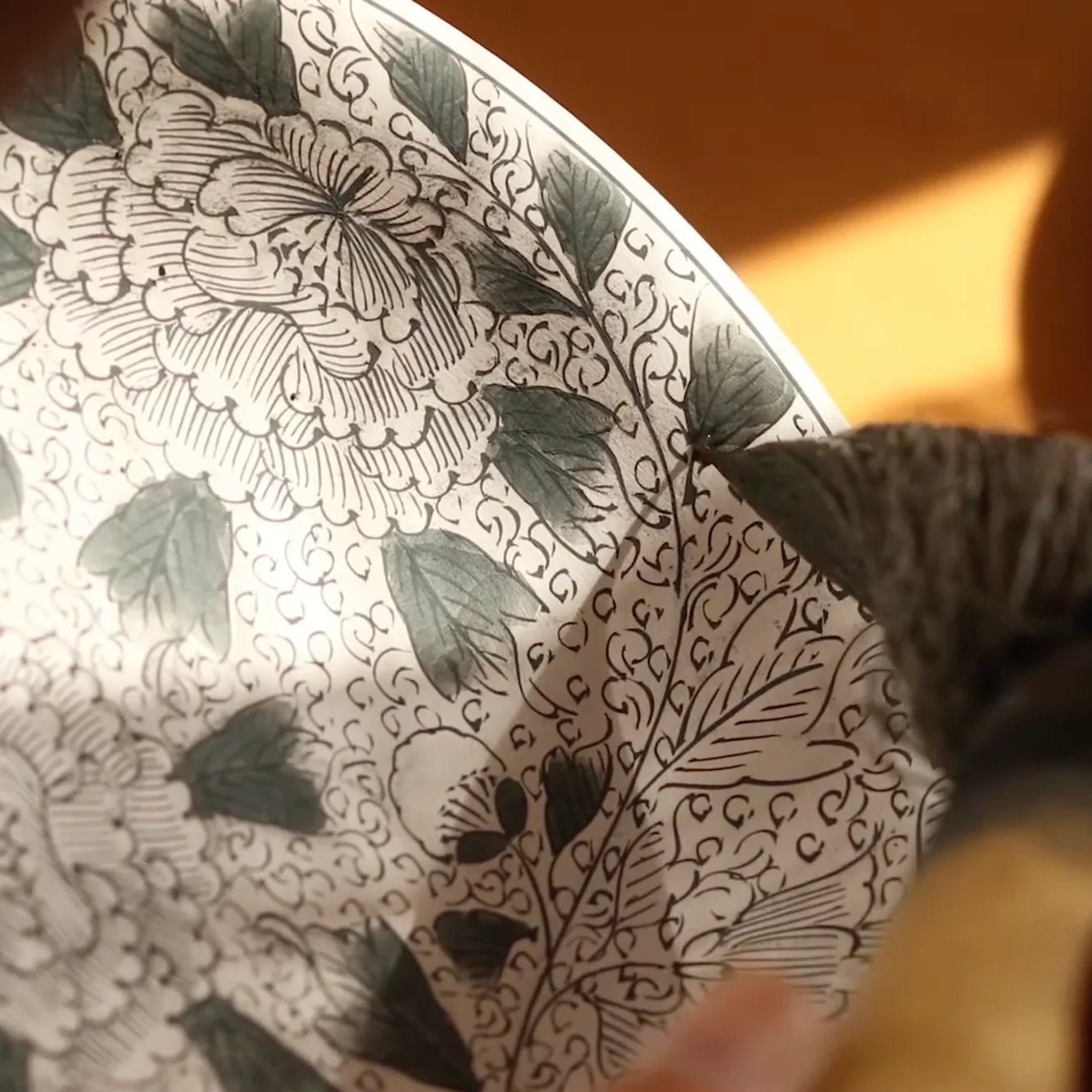
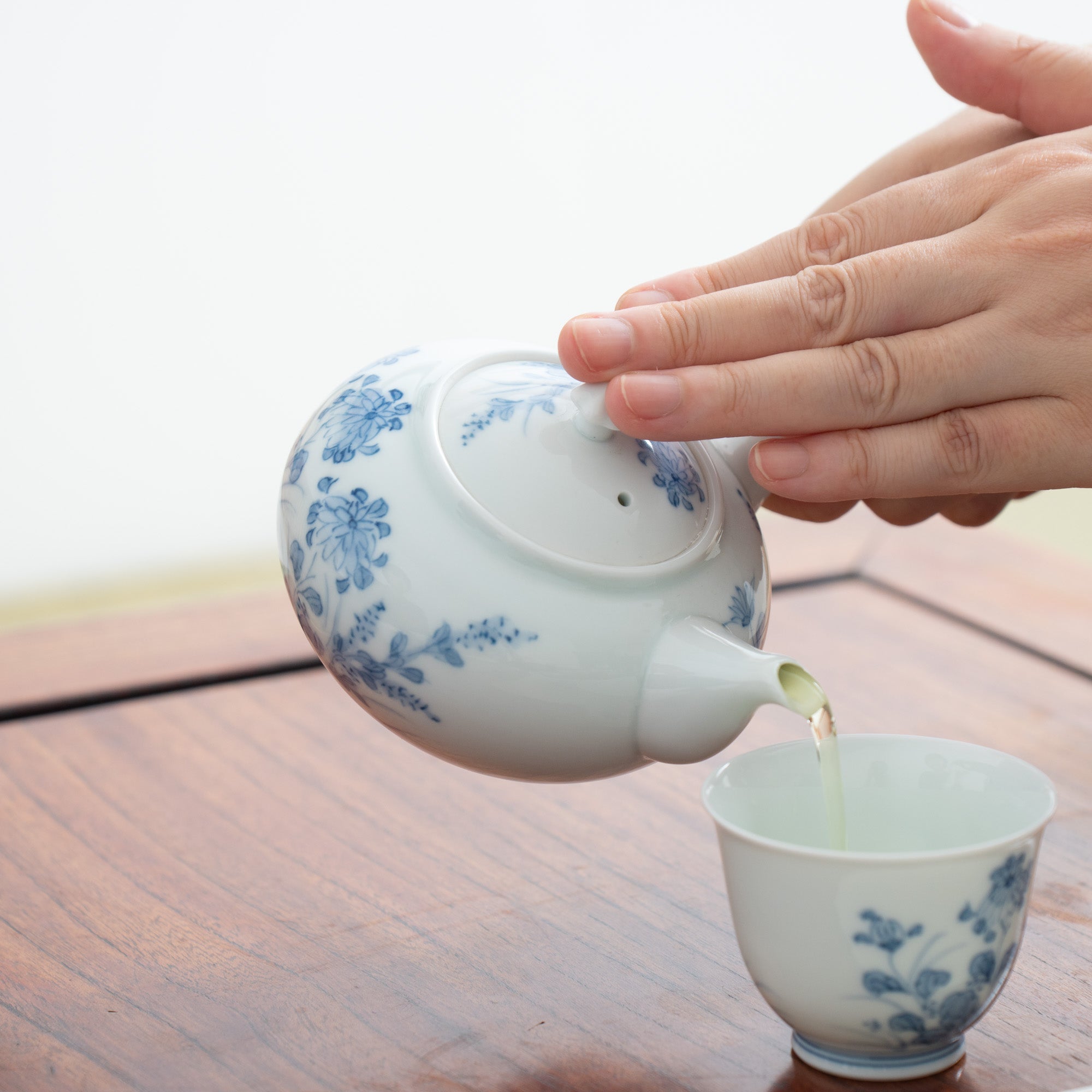
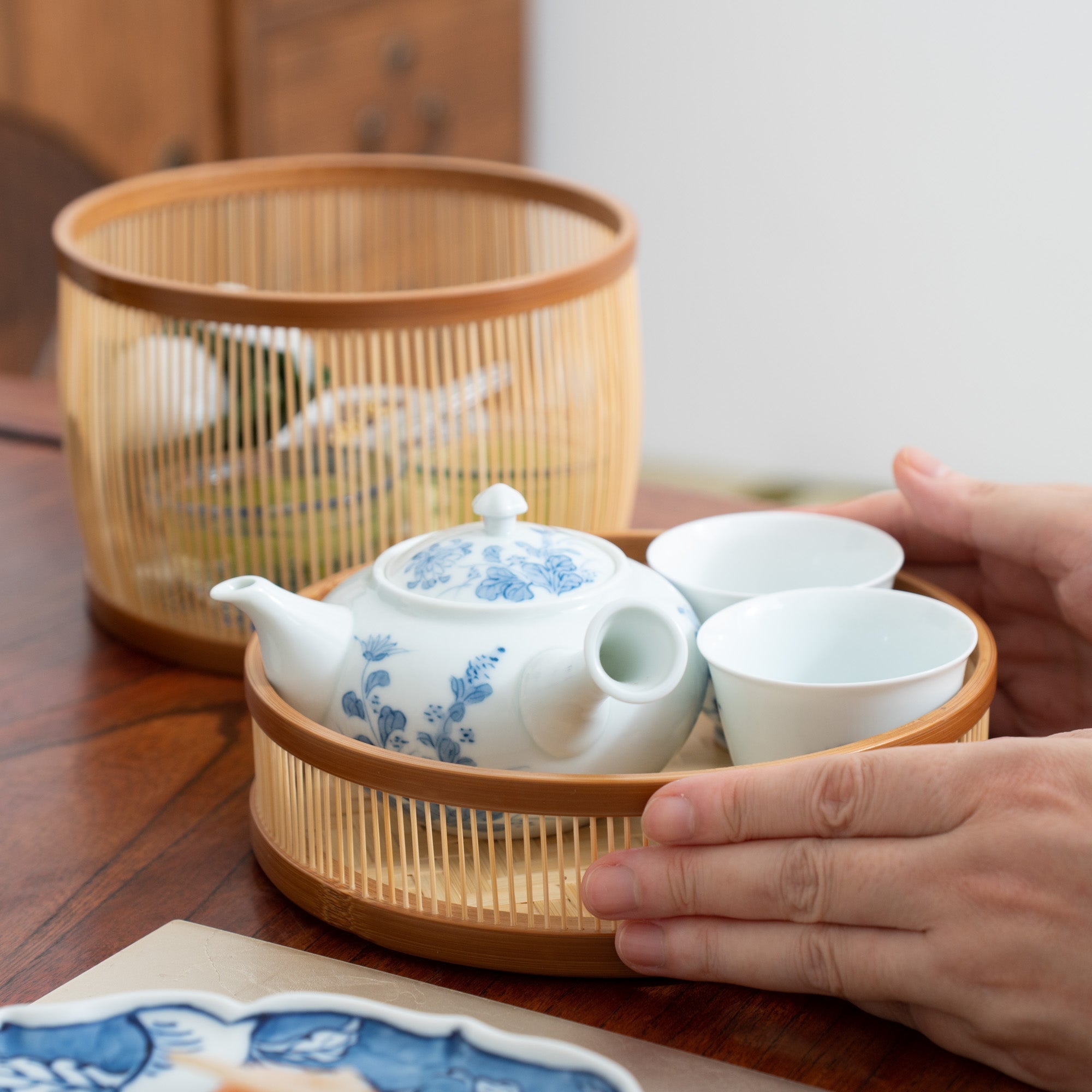
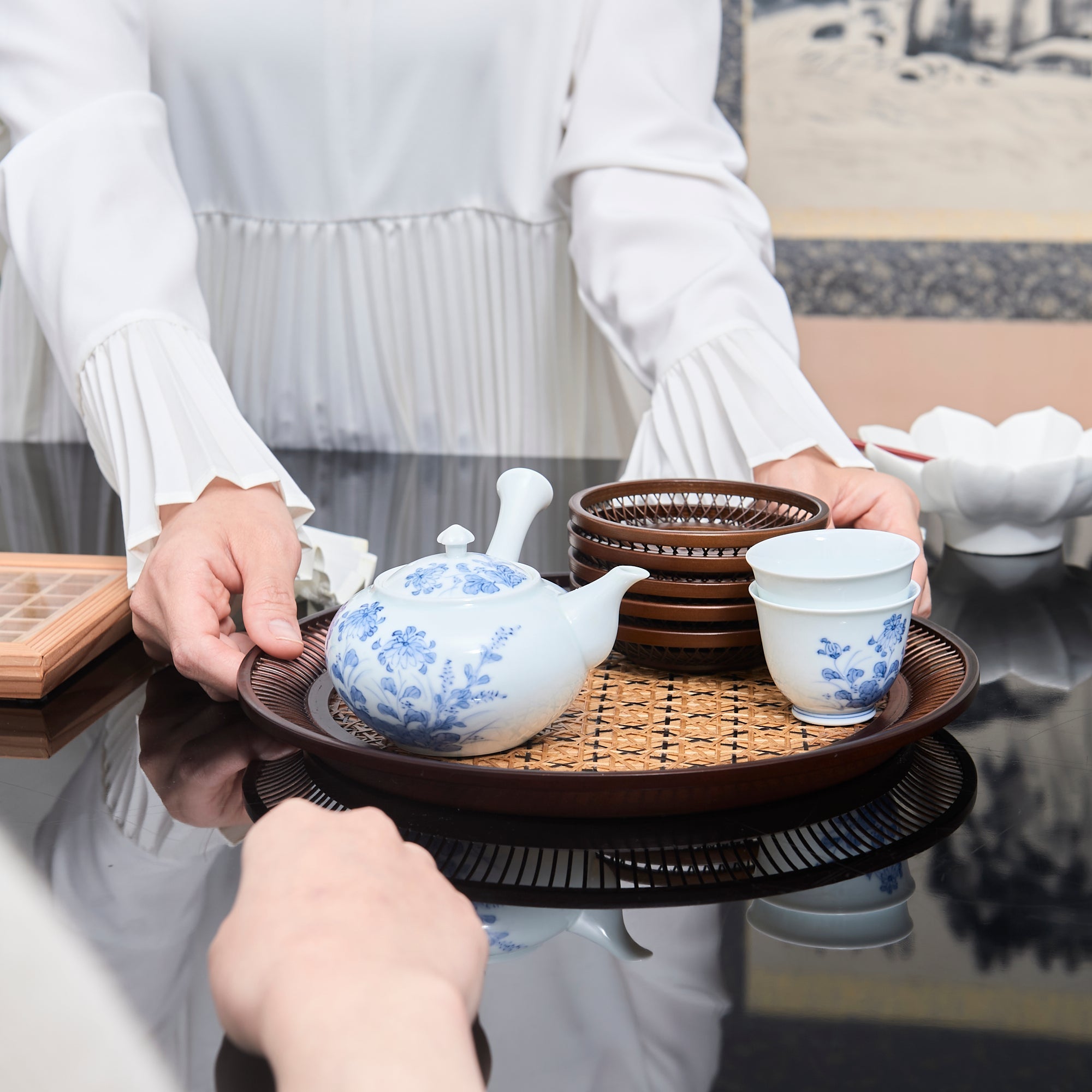
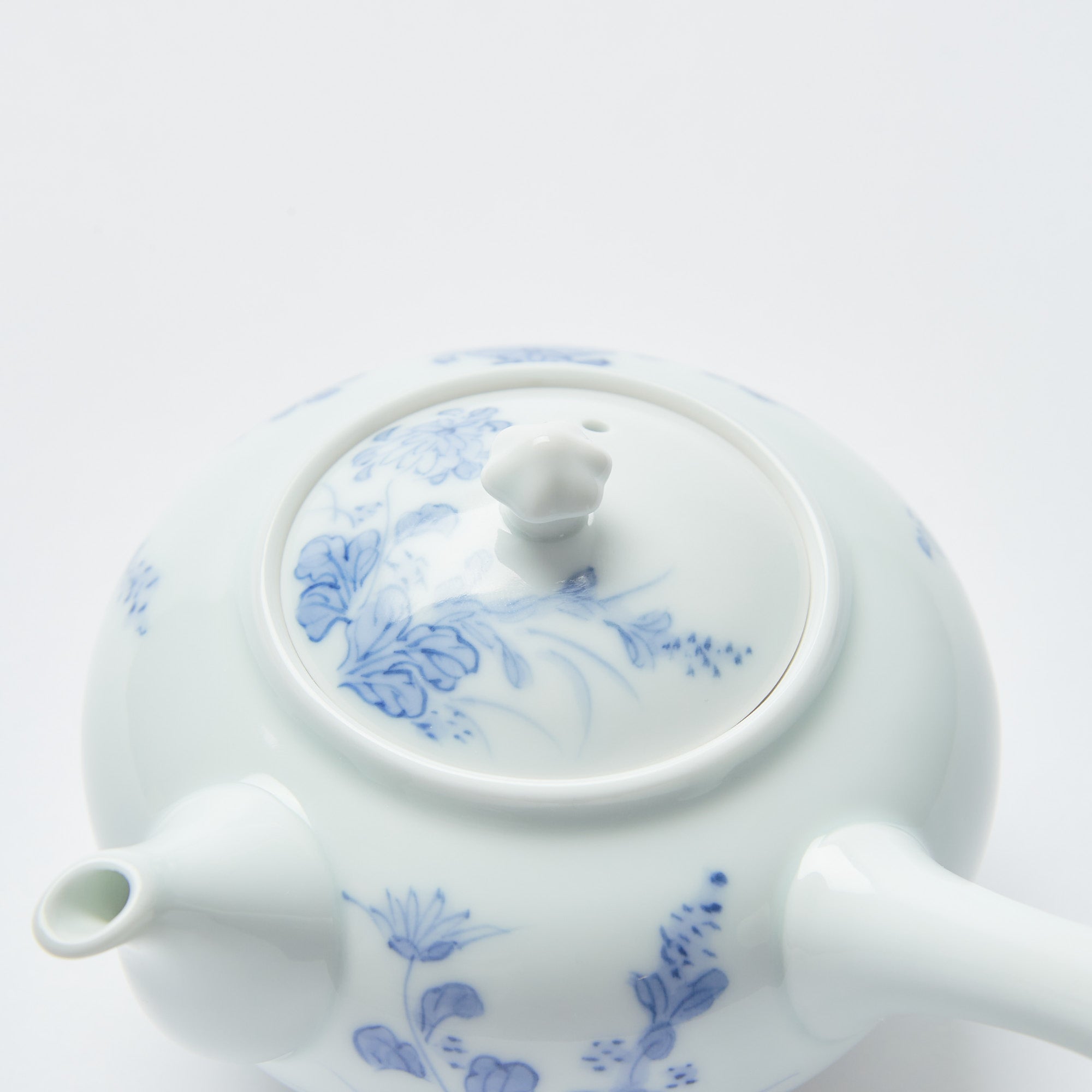
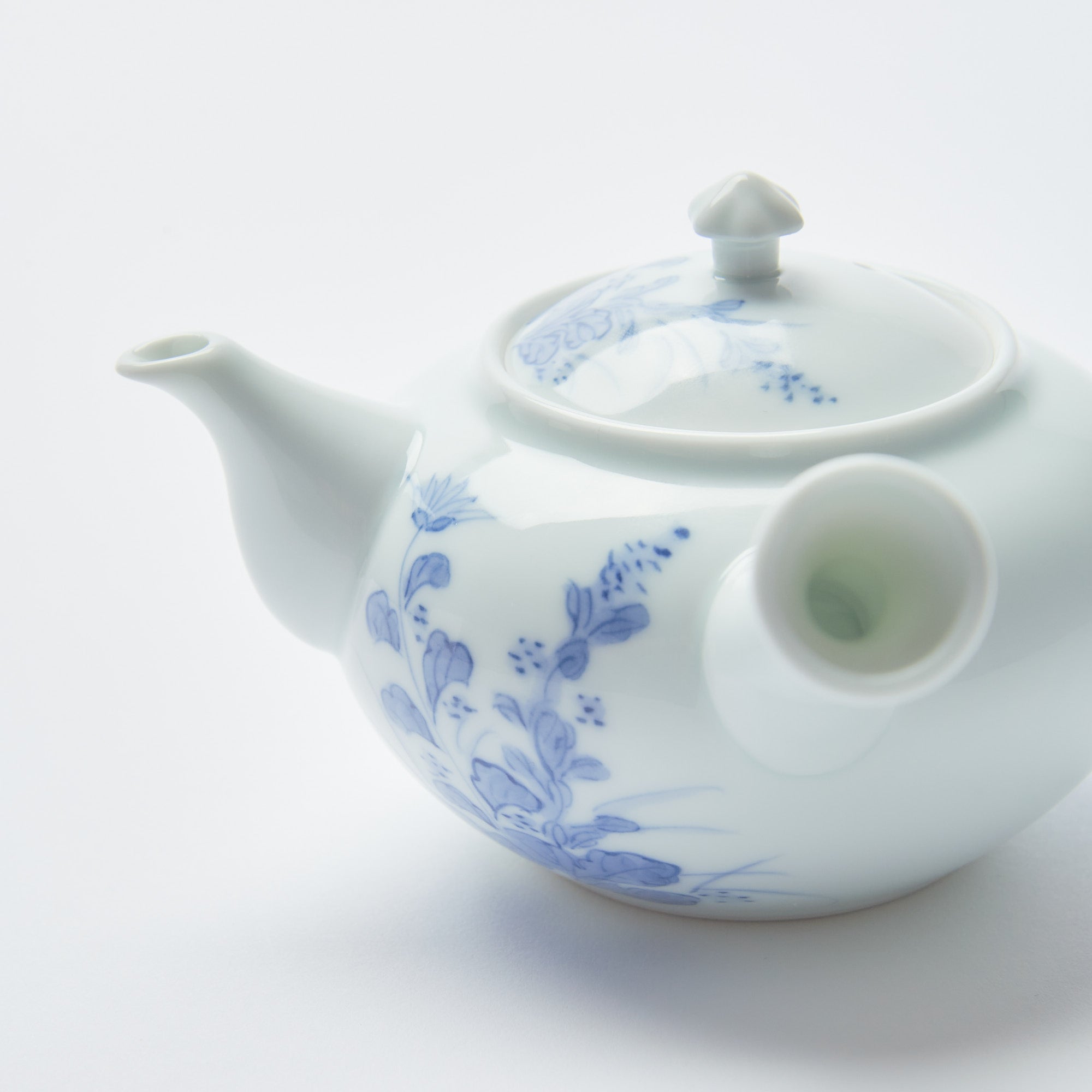
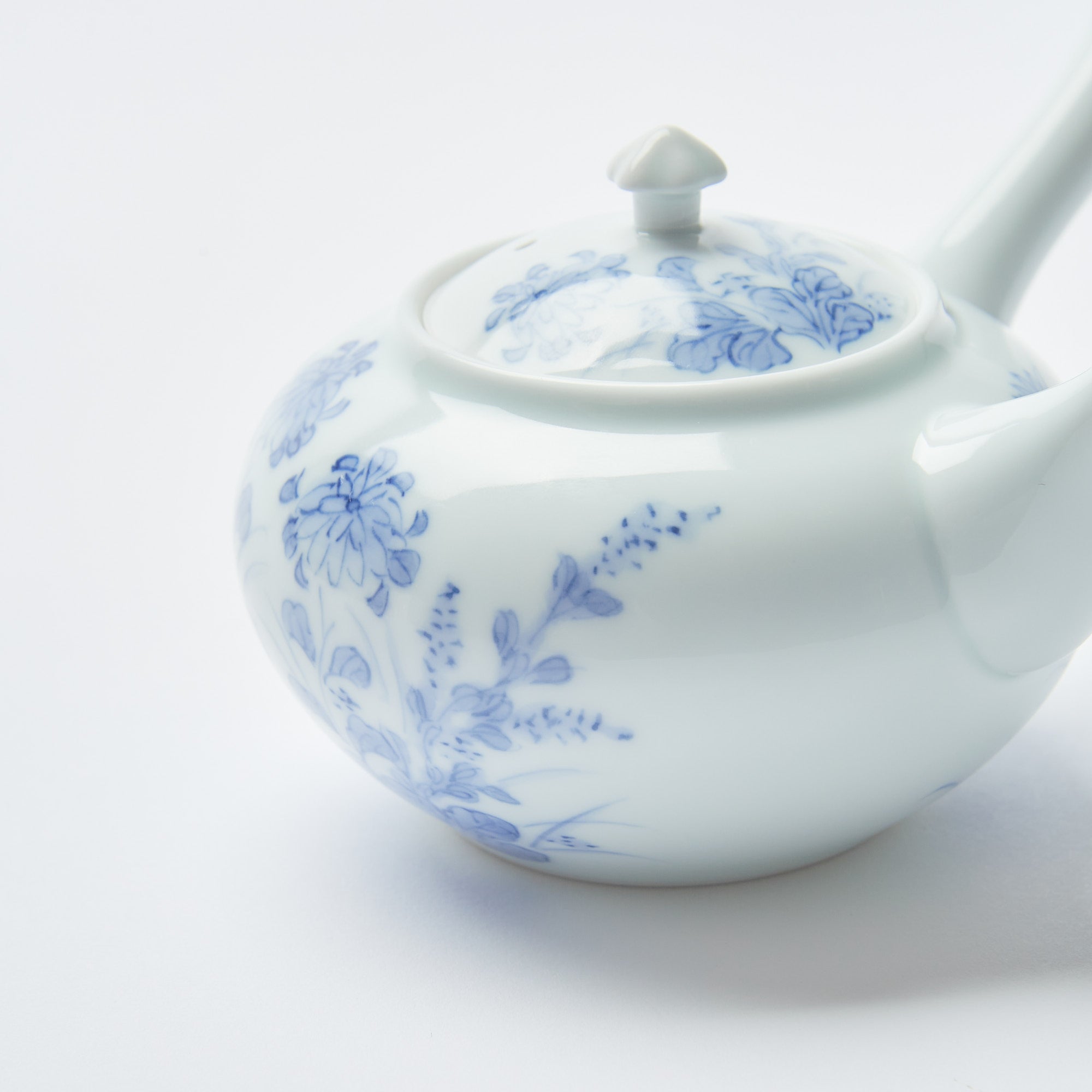
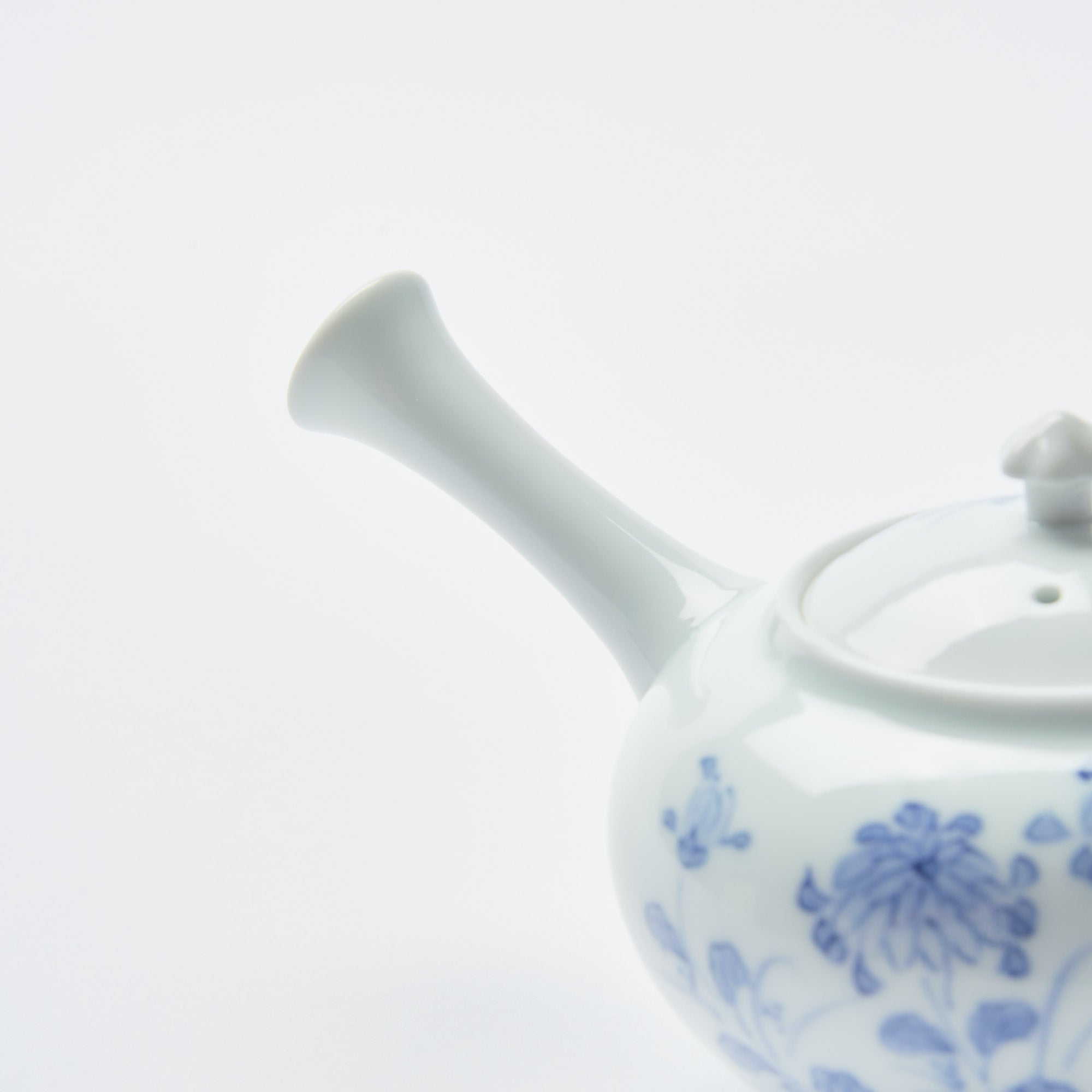
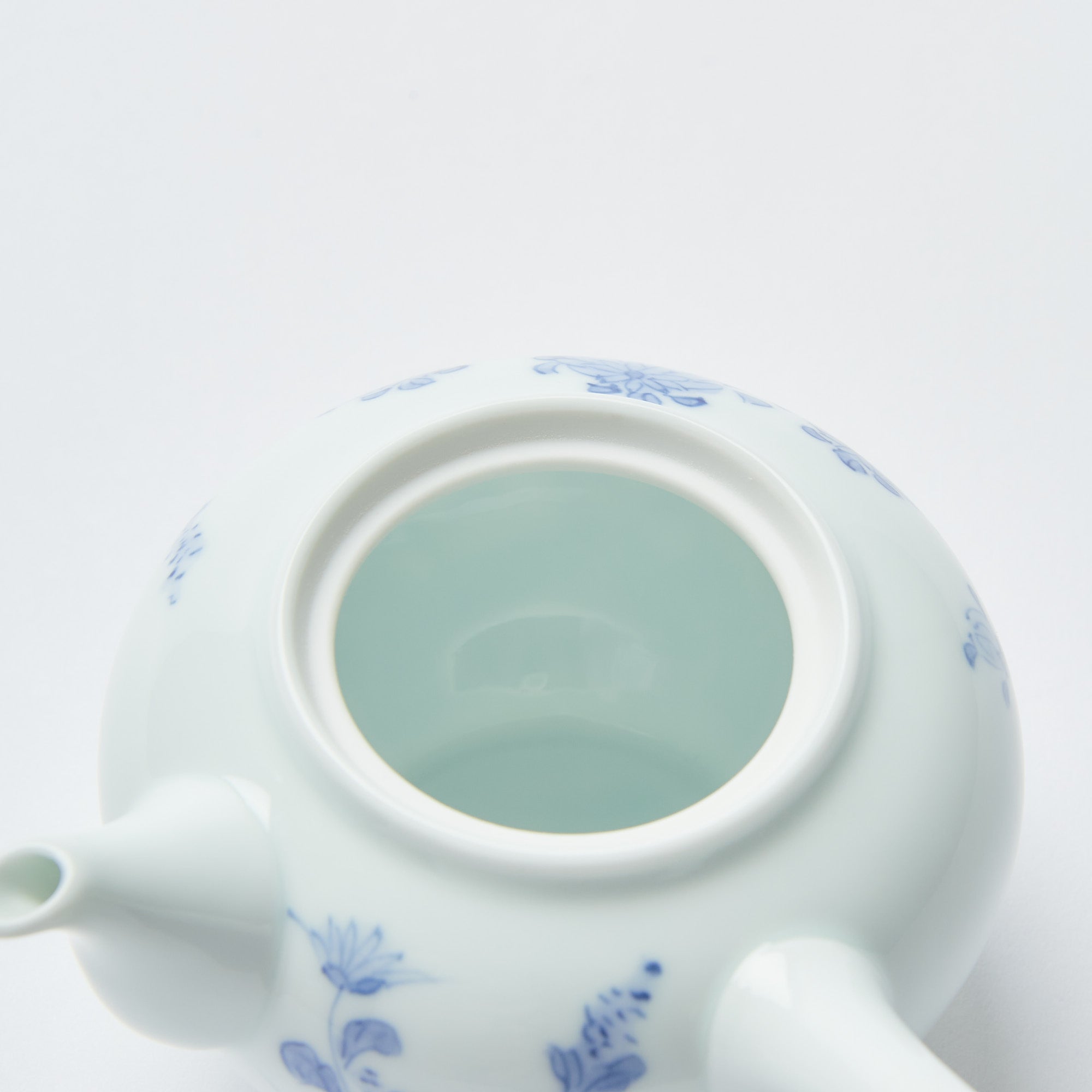
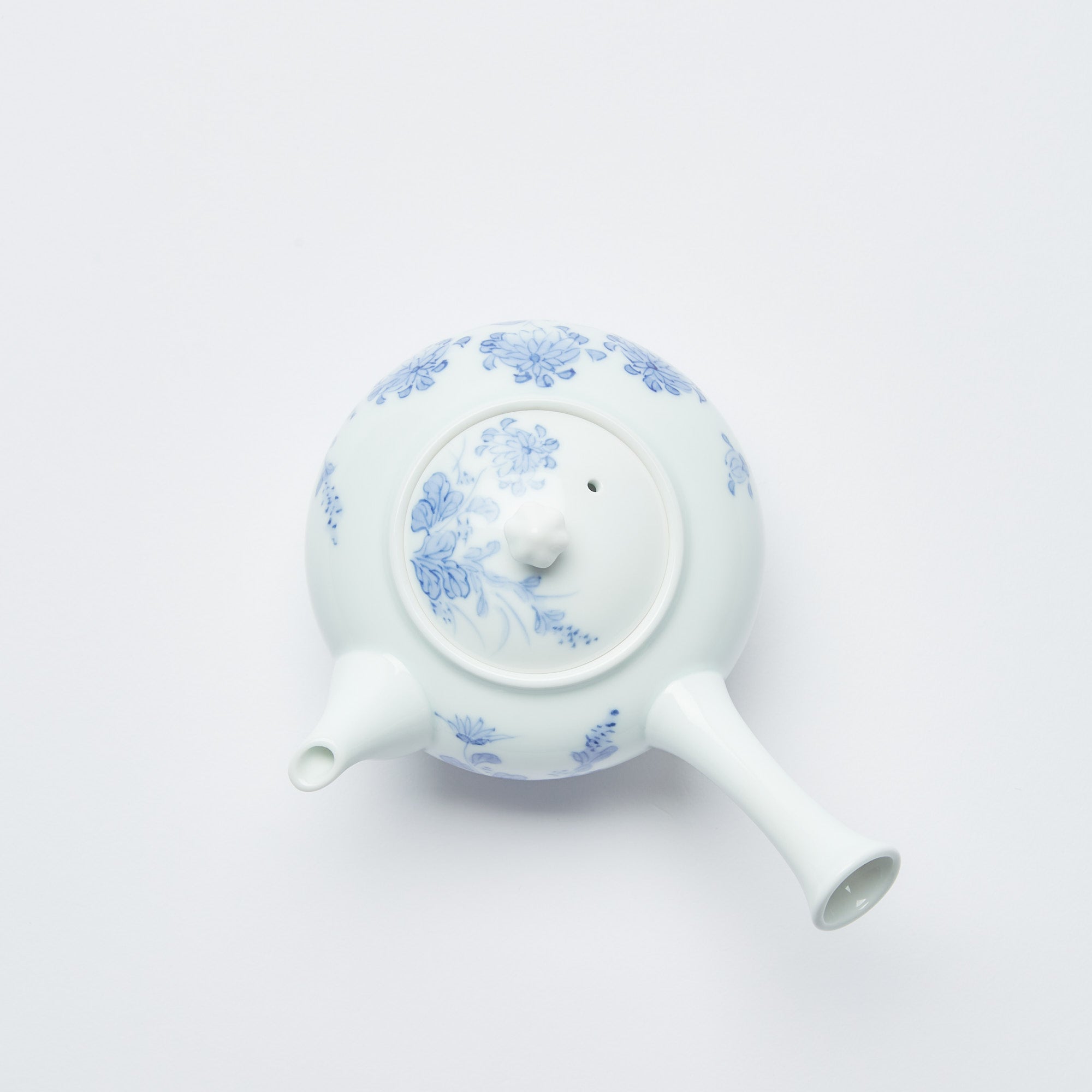
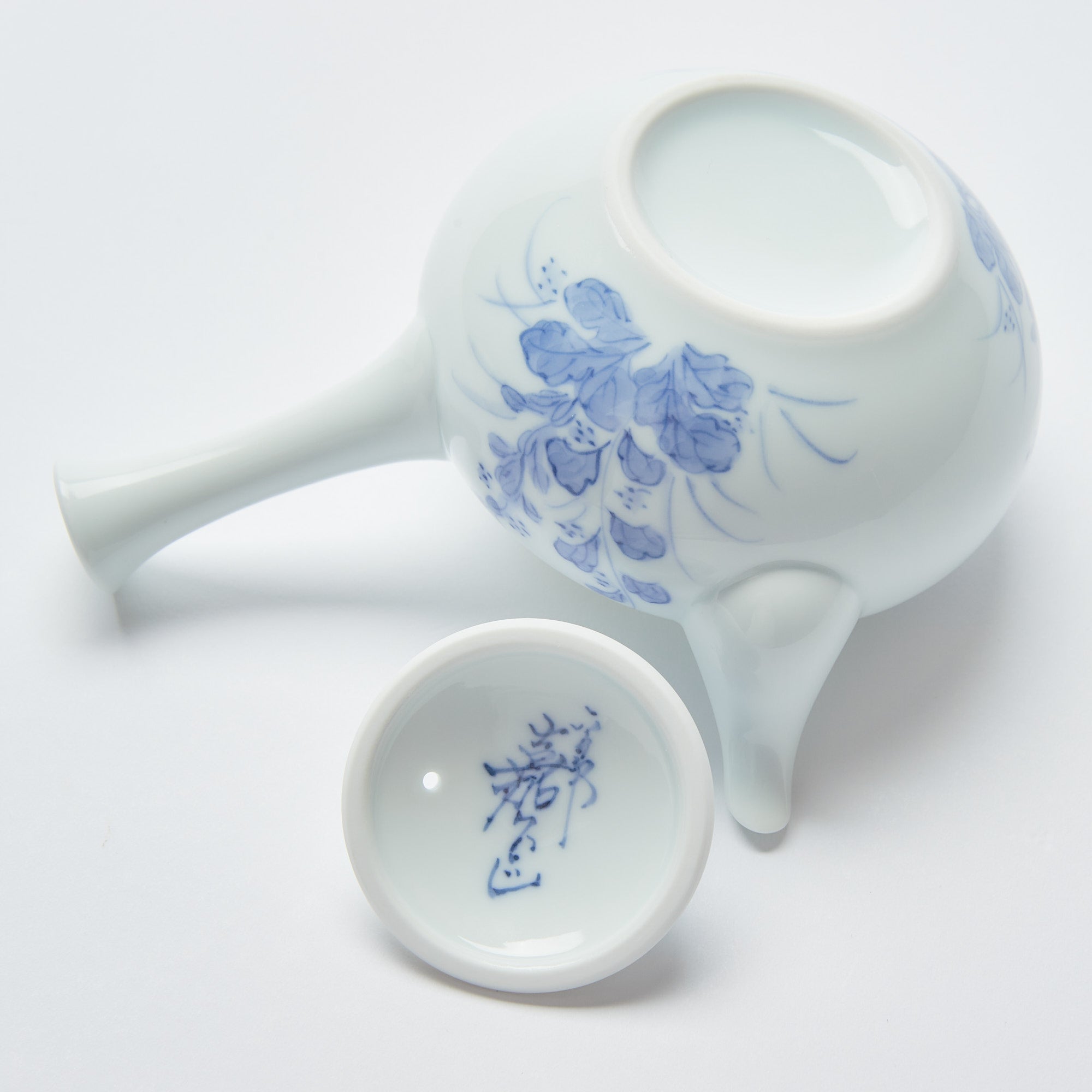
Japanische Teekanne mit Chrysanthemen und Buschklee
Estimated Shipping Widget will be displayed here!
Diese bezaubernde kleine runde japanische Keramikteekanne ist ein entzückendes Stück, verziert mit blauen Zeichnungen auf weißem Porzellan. Vom Deckel bis zum Korpus sind Chrysanthemen und Kleeblätter fein von Hand gezeichnet. Diese Blumen laden zu einer heiteren und erhabenen Stimmung ein, die durch das leuchtend weiße Porzellan noch verstärkt wird.
Der zylindrische Griff ist geschwungen und liegt perfekt auf Ihren Fingern, während Sie die kühle und glatte Textur des Porzellans spüren. Man genießt die Harmonie des dünnen und haltbaren weißen Porzellans und der sanften und zarten Blautöne. Es ist sehr leicht, wie es für Mikawchi-Ware charakteristisch ist, die durch das kunstvolle Ausarbeiten dünner Tonschichten entsteht.
Die Blautöne weisen eine exquisite Abstufung auf und wurden von erfahrenen Handwerkern sorgfältig mit in Kobaltpigment getränkten Pinseln gemalt, sodass die Farbe natürlich auf das Porzellan fließt. Die Farbe „sinkt“ in den Ton und erzeugt einen sanften und weichen Blauton. Die Umrisse werden mit weichen und feinen Pinseln entlang der Konturen der Blumen und Blätter schnell, präzise und sorgfältig gezeichnet.
Diese Teekanne macht Ihr Teetrinkerlebnis eleganter und heiterer, während Sie den Glanz des weißen Porzellans und die herzerwärmenden Gemälde in Blautönen genießen.
EINZELHEITEN
| Quantity | 1 |
| Size | L 14 cm (5.5 in) x W 11.5 cm (4.5 in) x H 7.5 cm (3.0 in) |
| Capacity | 220 ml (7.4 fl oz) |
| Material | Porcelain |
| Microwave | Yes |
| Dishwasher | Yes |
Hersteller / Marke
Der Kakusho-Ofen ist ein historisch prestigeträchtiger Ofen, der in der Edo-Zeit (1600 n. Chr.–1868 n. Chr.) der Herrschaft der Hirado-Domäne diente. Der Kakusho-Ofen hat die traditionelle Kunst der Sometsuke, blaue Designs auf weißem Porzellan, seit mehr als 300 Jahren.
Ihr leichtes und elegantes Porzellan fühlt sich glatt an und hat einen weichen und sanften Blauton, der angenehm für das Auge ist.
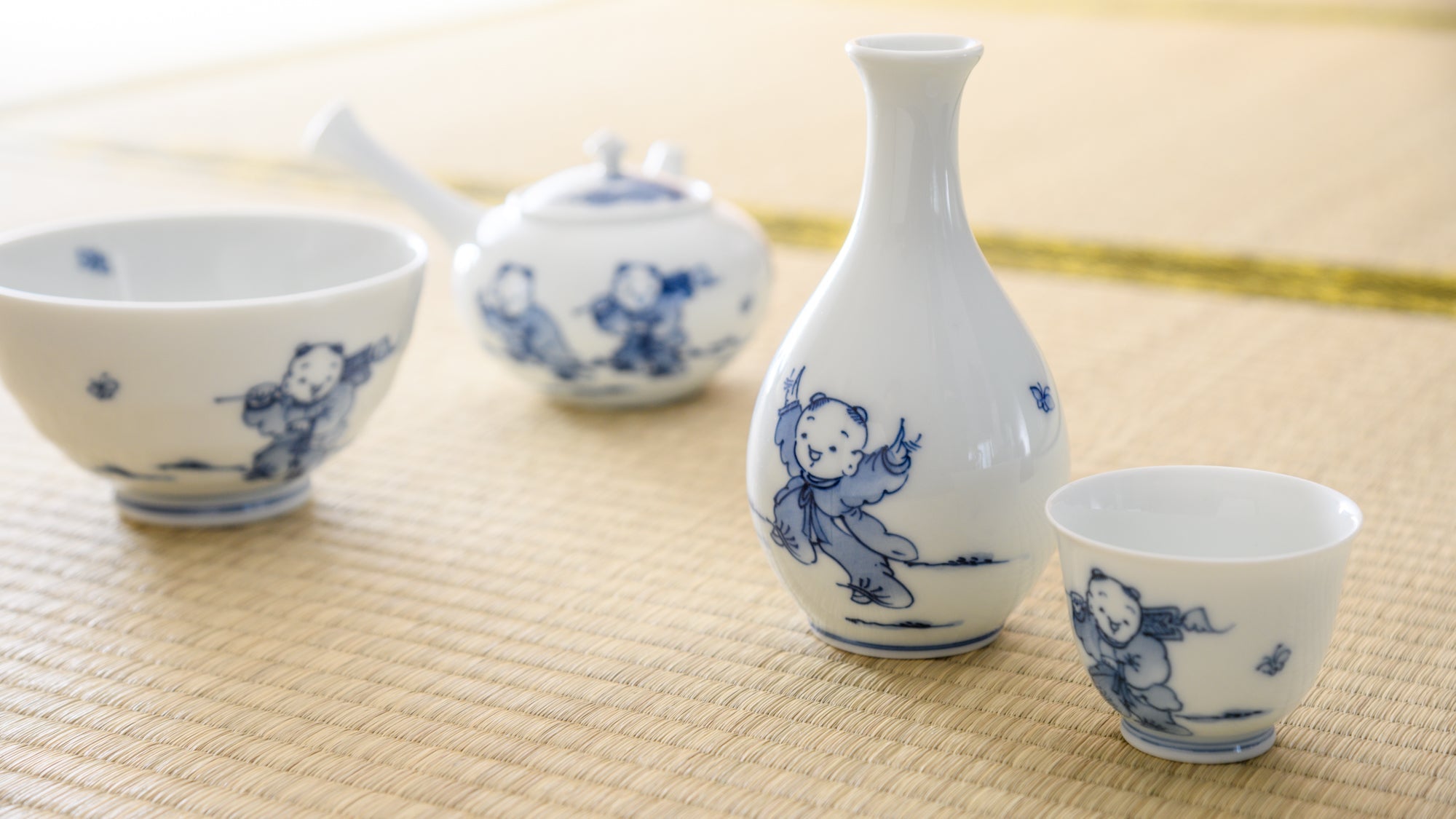
Kunsthandwerk
Mikawachi-Keramik, auch Hirado-Keramik genannt, ist eine Keramik aus Sasebo, Präfektur Nagasaki, Japan. Bekannt für ihr durchscheinend weißes Porzellan, erfreute sie sich während des Trends zu japanischem Kunsthandwerk im Westen im 20. Jahrhundert großer Beliebtheit in Europa. Mikawachi-Keramik zeichnet sich durch filigrane Modelliertechniken aus, die die Grenzen von Porzellan erweitern, wie beispielsweise durchbrochene und Reliefschnitzereien, und durch ihre wunderschöne Bemalung, die wie ein einziges Kunstwerk wirkt.
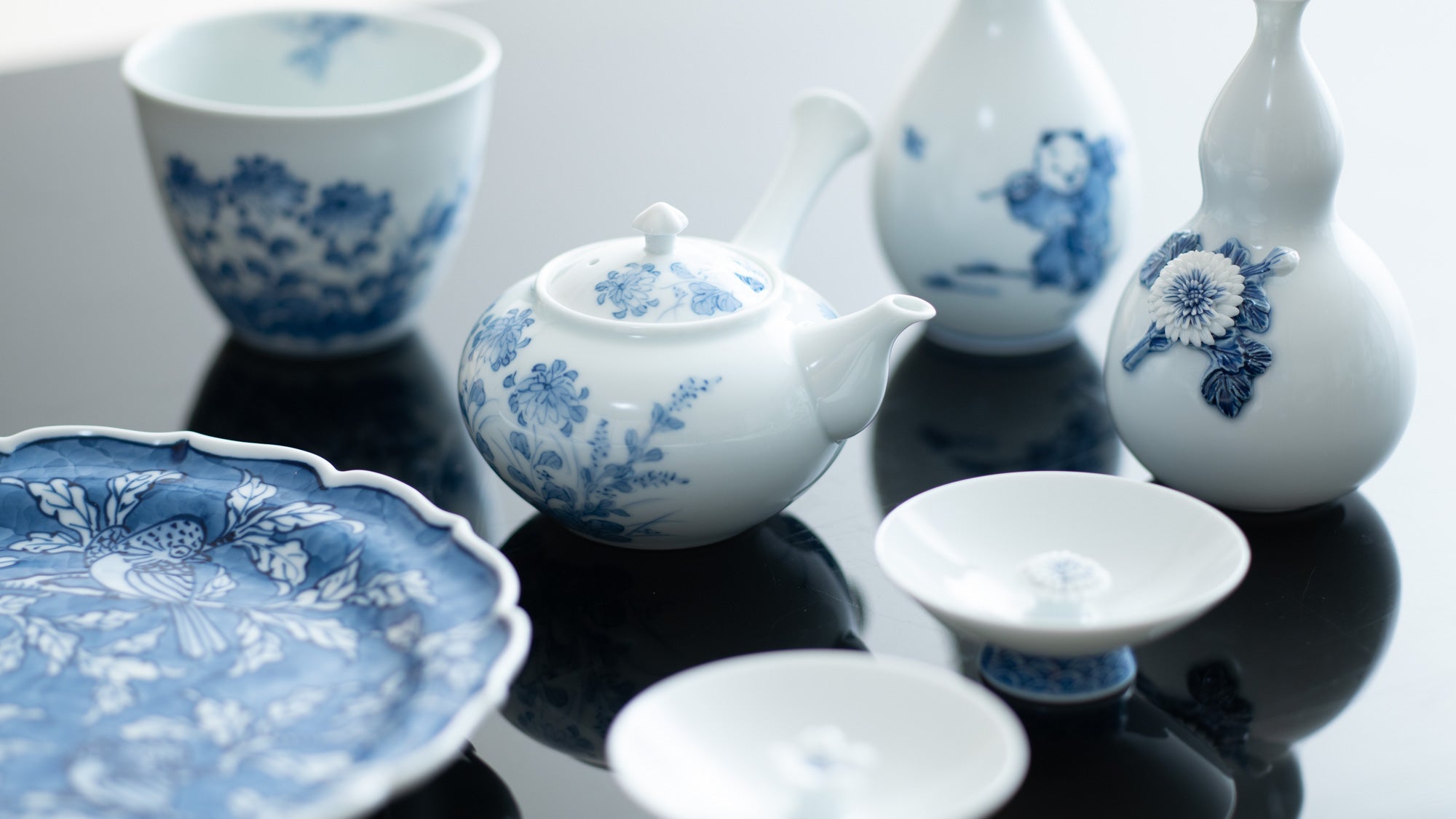
Optionen auswählen














Estimated Shipping Widget will be displayed here!
Japanische Teekannen
In unserer vielfältigen Auswahl an Stilen finden Sie garantiert eine japanische Teekanne, die Ihr Herz erwärmt – egal, ob Sie eine Keramikteekanne aus Porzellan oder Steingut oder einen klassischen Teekessel aus Gusseisen suchen. Egal, welche Teesorte Sie bevorzugen, schaffen Sie ein authentisches japanisches Teeerlebnis mit einer Teekanne, die sich durch klassische und einzigartige Formen, Farben und raffinierte Designs auszeichnet.
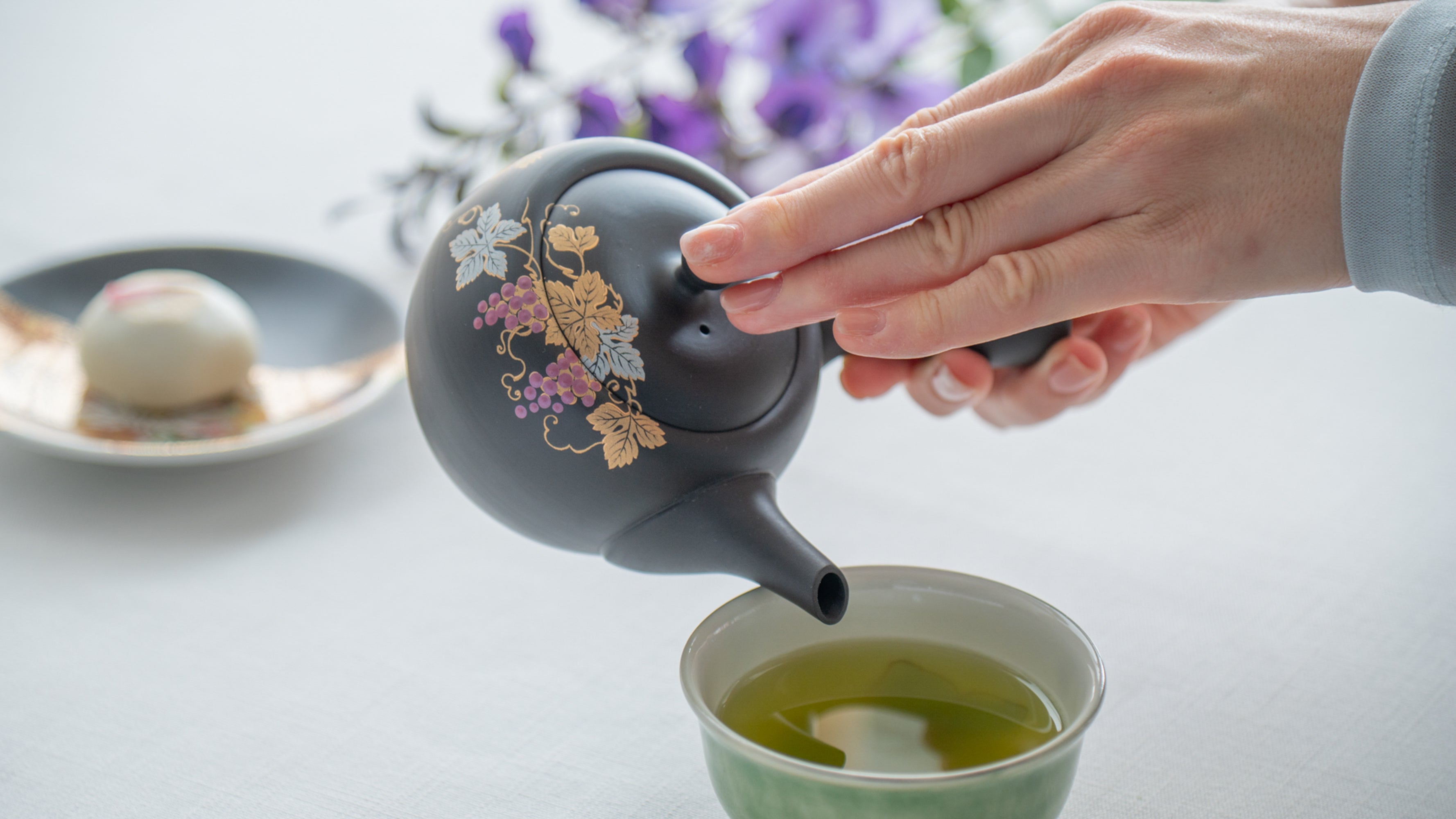
Sometsuke
Sometsuke ist eine dekorative japanische Töpfertechnik, auch bekannt als blau-weiße Keramik. Dieser klassische Stil wird weltweit für seine Eleganz geschätzt. Wir bieten eine große Auswahl an blau-weißen Tellern, Schüsseln, Trinkgeschirr und vielem mehr.
Die optisch ansprechende Farbgebung aus kobaltblauem und weißem Porzellan von Sometsuke bringt die Schönheit von Speisen zur Geltung und lässt sich problemlos mit einer Vielzahl von Geschirr kombinieren. Die feine, glatte Oberfläche und das leichte Tragegefühl sorgen für ein noch angenehmeres Benutzererlebnis.
